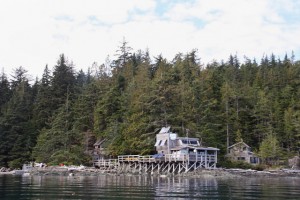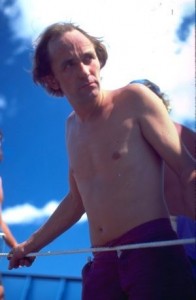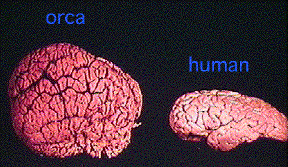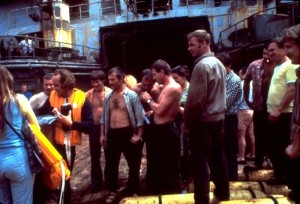The ET Orca Program – Research on behalf of Orcas
Orcas are just amazing. They are the largest of the dolphins, with far larger brains than our own. They have tight family bonds, their own dialects and customs. And a very strange thing – though the most fearsome of earth’s carnivores, there is no record of them harming a human without provocation.
Orcas are an incredible species. The oceans’ top carnivores, they have learned to live without fear. And there is much they can teach us, because they show that power can be used wisely. Humans are respected by wild orca and safe around them. But orcas have suffered greatly at human hands. These self-aware creatures with deep family ties – and brains which dwarf our own in size – are relatively few in number, and very vulnerable to degradation of their environment.
The ET Orca Project exists to help orcas survive human pressures, and it has a decades-long relationship with one of the world’s finest research and science outreach operations, Orcalab. U.S. Donors to the ET Orca Project have been able to provide U.S. tax-deductible support for this effort due to this program alliance.
About Orcalab
(From Orcalab.com)
In 1970, Dr. Paul Spong founded OrcaLab, a small land based whale research station nestled against the evergreen forest of Hanson Island in the waters of the “Inside Passage” of northern Vancouver Island in British Columbia, Canada.
The work of OrcaLab is centred on the philosophy that it is possible to study the wild without interfering with lives or habitat. A network of hydrophones, positioned around the orcas’ “core habitat”, helps us monitor their movements all year round. Supplementing the acoustic data are visual sightings of orcas as they pass OrcaLab, and reports from land observation sites staffed by OrcaLab volunteers during the summer “season”, as well as reports from other researchers and whale watchers who share observations and information.
Since 1994, OrcaLab has operated a video monitoring station on Cracroft Point in Johnstone Strait that allows the unobtrusive collection of both surface and underwater images of orcas and other ocean life. Beginning in 2000 and continuing through 2005, OrcaLab and Japan’s NTT Data Corporation brought the everyday beauty of the orcas’ lives to the Internet via www.orca-live.net. Plans for this project now include creating a production studio in a new operations base in Alert Bay. This will monitor and control a network of video cameras, enabling us to bring live imagery as well as live sounds to a worldwide audience via the Internet.
OrcaLab’s work also includes vital conservation issues – preservation of orca habitat; release and rehabilitation of captive cetaceans, especially Corky; and bringing to an end the dismal era of commercial whaling.
EarthTrust, Greenpeace, and Paul Spong
So where did we meet Dr. Spong, who created and runs Orcalab? Well, we go back a ways.
Paul was the scientist who got “Greenpeace” into the whale issue. Yes, he’s THAT guy. And he has been a tireless advocate for the whales since then.
We first met him in 1976 when the GP ship James Bay put into Hawaii during its campaign to expose Soviet whaling. And he and Bob Hunter tasked us with coming up with the next year’s whale campaign.
We took it seriously.
the ship “Island Transport” before becoming the ET/GP ’77 whale campaign Hawaii flagship.
ET, operating as Save the Whales – Hawaii, located a ship and started the arduous process of raising funds to buy it and outfit it to harass the whalers. Later in the year, Paul flew to Hawaii with George Korotva and incorporated a “greenpeace” organization as well. The vessel Ohana Kai was refitted with collaboration from the growing GP movement, and painted on one side with the ET logo’s and on the other with GP’s.
A young Dr. Spong rigging up the Ohana Kai ’77, Hawaii
Orcas are brainy…
Orcas have brains – and cerebral cortices – which are not only comparable in complexity to human brains, but a lot larger.
There has been a lot of shuffling of feet in the scientific community with regards to animals whose brains look more impressive than ours. If you use a “brain to body weight ratio”, that puts them beneath humans in intelligence. But that ratio also tends to put things like spider monkeys above humans.
Indeed, coming up with a system to explain why humans must be more intelligent pretty much relies on pointing at skyscrapers and jet planes and libraries. They can’t build them. Of course, that has more to do with the physical realities of being an orca, and the things that are possible in water.
Orcas communicate between one another, are clearly highly intelligent, passed the self-awareness testing first given by Dr. Fabienne Delfour and Dr. Ken Marten of the ET Delphis lab, and have lived at peace in the seas for longer than the human experiment has been running.
And despite being the most powerful social hunting carnivore in the world, for some reason they don’t hurt humans unless attacked.
There’s a lot to respect. Let’s be very careful of feeling superior to orcas.
Make a Donation to the ET Orca Campaign!
You may designate your contribution 100% for any campaign of your choice at ET, including the ET Orca Campaign.
To do so, click on the DONATE button below, and include a message designating your gift to the Orcas. It will be honored.
Paul Spong interacts with stern-faced soviet whalers on the deck of the Dalniy Vostok factory whaling ship, after having boarded it through the slipway.
It has been an honor knowing Paul, his family and his supporters over the years, and gratifying that he and they have stayed on the front lines of no-nonsense whale research and conservation. Indeed, he’s been doing it longer than we have, and it seems like we’ve been doing it for quite awhile…
















